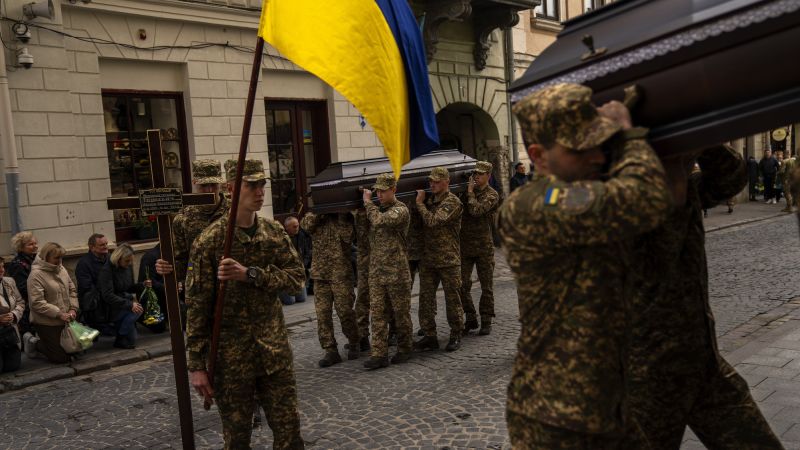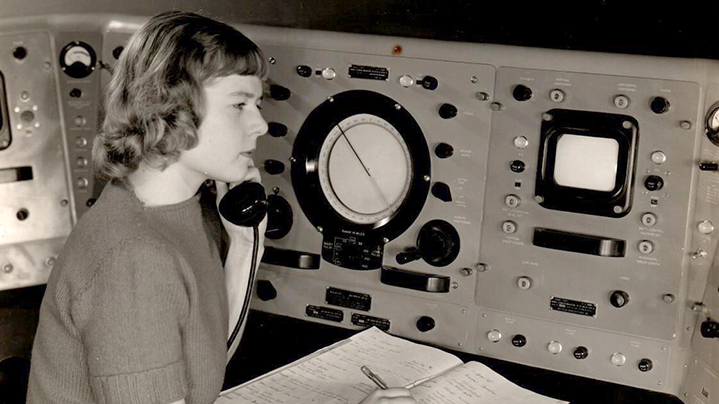Virginia Norwood sits at the Storm Detector Radar Set at the Army Signal Corps Laboratories in New Jersey in a photo displayed at the Institute for Radio Engineers Convention, Spring 1950.
Virginia Norwood via NASA
hide caption
toggle caption
Virginia Norwood via NASA
Virginia Norwood sits at the Storm Detector Radar Set at the Army Signal Corps Laboratories in New Jersey in a photo displayed at the Institute for Radio Engineers Convention, Spring 1950.
Virginia Norwood via NASA
Virginia Norwood, a founding figure in satellite land imaging who developed technology to scan the surface of the moon for safe landing sites and map our planet from space, died Sunday at age 96.
Norwood is best known for developing the Multispectral Scanner System that flew on the first Landsat satellite, making her the “Mother of Landsat,” according to NASA.
Landsat 1, launched in July 1972, was the first satellite to study and monitor Earth’s landmasses and operated for nearly six years. The space agency said the “quality and impact of the resulting information exceeded all expectations.”
In the 1960s, a decade after becoming the first woman to work on Hughes Aircraft Co.’s technical staff, Norwood was part of an advanced design group at Hughes that worked on a NASA contract to create a spaceborne scanner. NASA was interested in getting multispectral images of the Earth from space, meaning images made from of a variety of different wavelengths, both visible and invisible.
Norwood went to the in-house inventor, S.D. “Webb” Howe, to create a scanner that could move constantly without breaking. Together, they designed a scanner in which only the mirror moved. As it swayed 13 times per second, the mirror collected both visible and invisible light to feed to the scanner.
This idea — the multispectral scanner that ended up revolutionizing the field — was met with skepticism from some NASA scientists who had settled on a traditional camera system. But it allowed satellite imagery to go beyond just looking at the surface.
After Landsat 1 launched, NASA scientists were amazed by the quality of the images. But Norwood wasn’t.
“I never had doubts about the MSS, because I designed it and knew it would work,” she told NASA in 2020. She was involved in the first five versions of Landsat, with Landsat 5 launching in 1984.
Those early images allow today’s scientists to assess changes in the Earth, like climate change, shoreline erosion and deforestation.
Before the Landsat launch, Norwood developed a transmitter for the 1966 Surveyor mission to send information back to Earth. That mission — the first NASA craft to make it safely to the moon’s surface — collected information about what the lunar surface was like and what the best places to land a crewed mission would be.
Norwood called the day Surveyor landed “the most exciting time in my career.”
Norwood was born in 1927, less than a decade after women won the right to vote, and she was often the only woman — and working mother — in the room throughout her career.
Upon seeing her high math aptitude scores, her high school counselor had encouraged her to pursue a career as a librarian. Instead, Norwood graduated from the Massachusetts Institute of Technology with a degree in mathematical physics in 1947. She briefly spent time selling blouses at a department store before she was able to find an employer willing to hire a female mathematician.
In 1948, when she started working for the U.S. Army Signal Corps Laboratories in New Jersey. There, at age 22, she designed and patented a device that detected high-altitude winds that were previously untraceable.
A few years later, she landed a job at Hughes Aircraft, becoming the only woman in their research and development labs. As she rose through the ranks, one man quit in protest. When he came back to Hughes years later and asked to work in Norwood’s group, she said no.
When asked if she liked the nickname Mother of Landsat, she told NASA: “Yes. I like it, and it’s apt. I created it; I birthed it; and I fought for it.”













More News
The Best Lubes for Every Occasion
Which Govee Smart Lighting Kit Should You Buy?
Auto Safety Regulator Investigating Tesla Recall of Autopilot